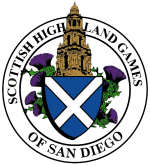Modern Highland dancing emerged in the 19th and 20th centuries, created by Gaelic folk dance repertoire, formalised with the conventions of ballet. It seems that forms of sword dancing were performed by warriors in many parts of Europe in the ancient period, attested in the late medieval. Ritualistic and combative dances that replicated epic deeds and martial skills were familiar in Scottish tradition and folklore. The earliest reference to these dances in Scotland is mentioned in the Scotichronicon, compiled with Scotland by Walter Bower in the 1440s. The dance “a natural feature of the festivities”, was used as part of a plot to assassinate the King, where the conspirators were able to bare their weapons.
“Sword dance and Highland dances”, were included at the reception for Anne of Denmark in 1589, and a mixture of sword dance and acrobatics was performed in 1617, again for Charles I in 1963, by incorporation of Skinners and Glovers of Perth. In the early 13th of brethren of Glovers with green caps, silver strings, red ribbons, white shoes and bells on their legs, shearing rapiers in their hands and all abulzments, danced with swords with difficult knots. In the 1900s, it was not organised at the national or international levels. Local persons were recognized as the judges at competitions without specific standards for attire.
Types of dances
Highland dances: the Highlanders developed as necessary planning for the management of the board sword used in specific dances to exhibit their dexterity, it includes the dances of two naked swords that are laid across each other on the floor, some of the dance moves nimbly around them. Dexterously placing their feet by a peculiar step in the intervals between crossed blades as in the Ghillie Callum. That has long been connected with dances before a decisive battle or as a victory dance. Legends have it that on the eve of battle the highland chief would call out the clan’s best dancers who would dance the sword dance.
National dances
At the Highland games, the national dances include the Scottish Lilt, the Earl of Erroll, Blue Bonnets, Hielan Laddie, The Scotch Measure, Flora MacDonald’s Fancy, Village Maid, and Barracks Johnny. All of these explain the history of dances in Scotland and other aspects of Scottish culture and history.
Character dances
The sailor’s hornpipe was adapted from the English dance and is now performed more frequently in Scotland, while the Irish Jig is a humorous portrait and tribute to the Irish step dancing. The dancers wear red and green costumes to represent an Irish person, gesturing angrily and frowning.
Hebridean dances
The Hebridean dances originated from the Hebrides and are now presented by Highland dancers. It is unknown when the dances originated, or who developed them, but in 19th-century dance master Ewen MacLachlan taught some people in the Western Isles- during the mid-1800s. They are Aberdonian Lassie, Blue Bonnets, over the water to Charlie, Tulloch Gorm, Flowers of Edinburgh, Scotch measures and first of August. Many of the dances in Scotland are from the Hebrides and have been partially or fully lost.

